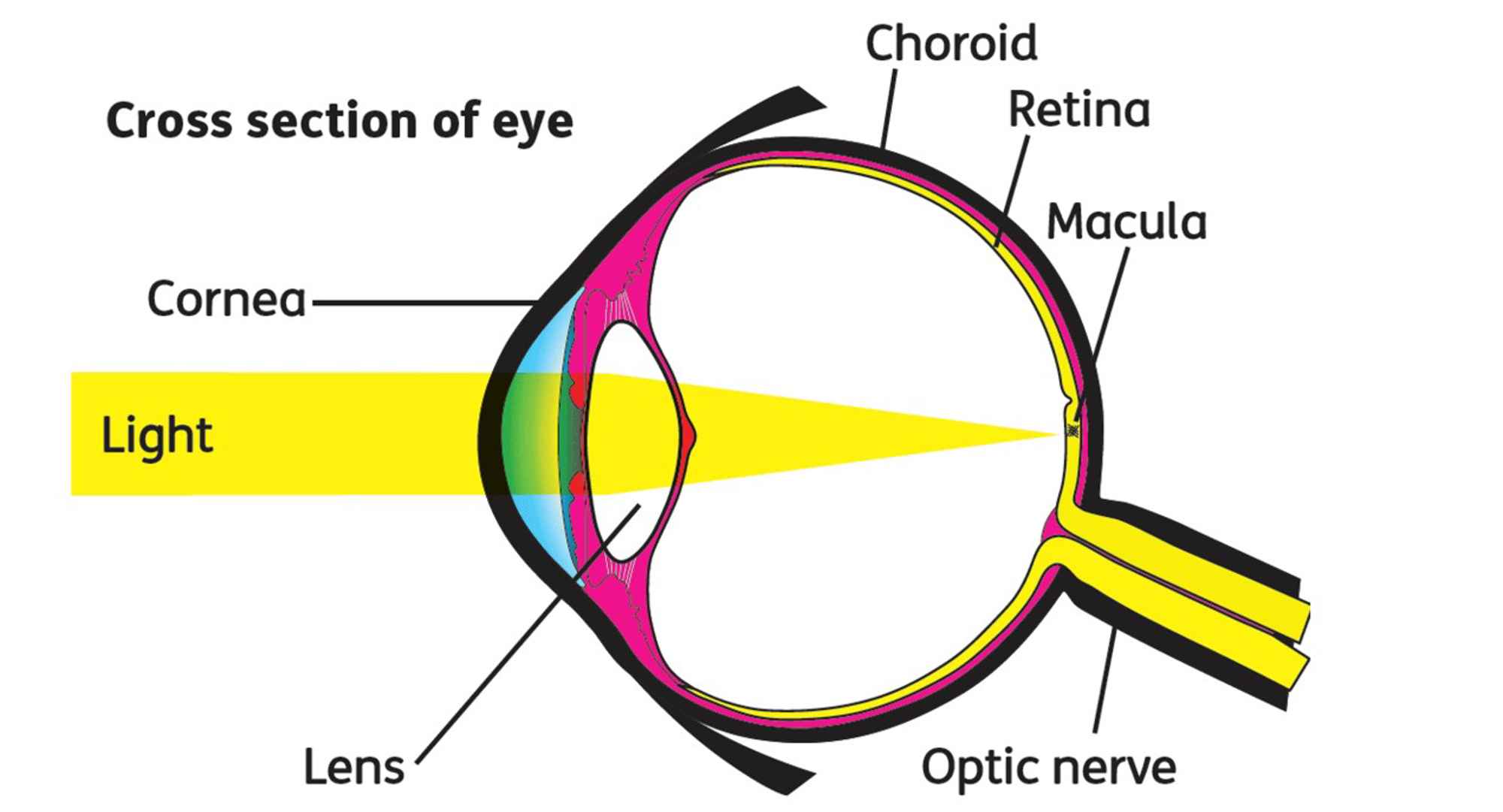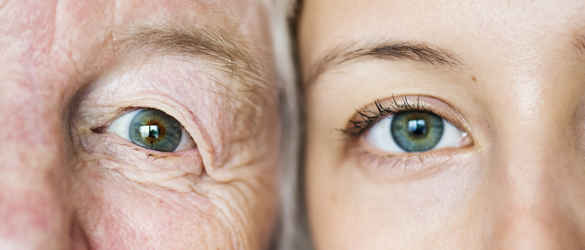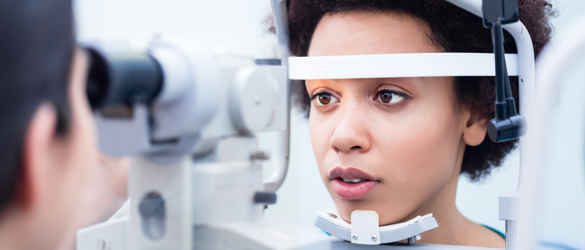
What is the macula?
The macula is part of the retina at the back of the eye. It’s a round, yellow spot that has a slight oval shape and is only about 5mm across, but is responsible for our central vision, most of our colour vision and the fine detail of what we see.
A healthy macula is about 250 microns (one quarter of a millimetre) thick.
Its full medical name in Latin is macula lutea – macula meaning ‘spot’ and lutea meaning ‘yellow’.
Anatomy of the macula
The macula has a high concentration of photoreceptor cells – the cells that detect light – and they send signals to the brain, which interpret them as images. Within those photoreceptor cells are rods and cones.
Rods are photoreceptor cells that detect intensity of light. They play a crucial role in night vision and low-light conditions.
Cones, on the other hand, are responsible for detecting colours and are the primary contributors to daytime vision. Together, rods and cones work together to create a sharp and detailed image of your surroundings.
The retina contains roughly six to seven million cone cells, the majority of which are located in the macula. Within this region, the fovea, which is a small central pit, holds the highest concentration of cone cells.
In contrast, there are an estimated 120 million rod cells found throughout the retina, primarily outside the macula. These rods are essential for detecting motion and supporting peripheral vision.
Cross-section of the eye
Why is the macula important?
When light enters the eye, it’s focused directly onto the macula. The macula plays a key role in turning light into the images you perceive. It controls your central vision, allowing you to clearly see what’s right in front of you.
This part of the retina is essential for sharp, detailed sight, helping you focus on fine details and pinpoint specific elements, which is crucial for tasks like reading, driving, recognising faces, watching television and using digital devices.
Like the rest of the retina, the macula transforms light into signals your brain can interpret. If the macula is damaged, your eyes could still detect light, but your vision would become blurry and lack clarity.
Common conditions that affect the macula
Some conditions that affect the macula include:
A to Z of macular conditions
Macular disease affects nearly 1.5m people in the UK and can occur at any age. While age-related macular degeneration (AMD) is the most common, there are many other types including rare inherited conditions called macular dystrophies which can affect much younger people.
What to do if you’re worried about your macula?
Talk to your doctor or eye care specialist if you notice any blurry vision or double vision, light sensitivity, any pain that doesn’t go away after a few days, or if your vision gets noticeably worse.
The best way to protect your macula and overall eye health is to have routine eye exams.
Routine eye checks can identify the early stages of macular conditions.
If you're in Scotland, receive certain benefits, are under 16 or over 60, you're eligible for free eye examinations. It’s recommended that these are done every two years if you’re over 60, and annually for anyone over 70.
The free exam includes a check of the macula. However, OCT (optical coherence tomography) imaging that captures detailed photos of the macula might involve an extra cost.
Last review date: July 2025
How is macular disease diagnosed?
Learn how macular disease is diagnosed through various tests and examinations. Optometrists and specialists can use photography or other imaging to detect early signs of macular degeneration.
Support for you
We provide free information and support to those with macular disease, along with their family and friends, to help people keep their independence.
Is your sight at risk?
Worried you might be at risk of macular disease?
Just answer five simple questions and we'll estimate your risk of age-related macular degeneration (AMD). It'll only take a minute, and it could make a world of difference to your sight.
Check your risk





